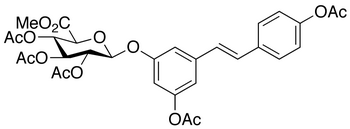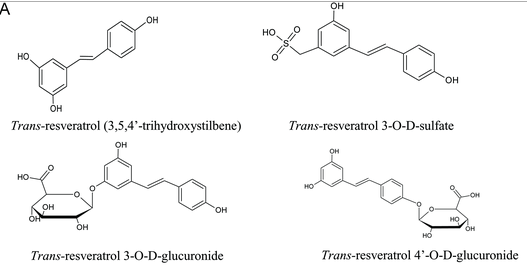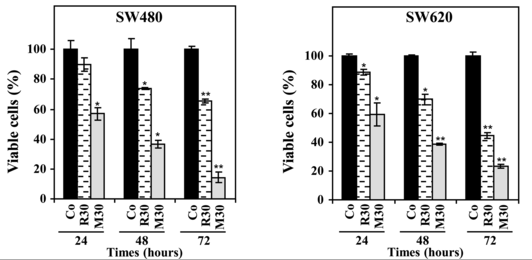ResveratrolConsumer
avert online
consumer fraud
ResveratrolQuiz
test your knowledge
New E-Book
How the world got lost on
the road to an anti-aging pill
Subscribe to our newsletter to receive email notifications when new articles are posted.
August 28, 2014: by Bill Sardi
Question:
Does resveratrol really activate SIRT1 – the “longevity” gene?
Resveratrol has been shown to activate the SIRT1 gene in the laboratory. However, it is not yet clear if oral supplementation with resveratrol has the same effect. [ConsumerLab.com posted August 27, 2014]
In response to the ConsumerLab.com suggestion (you wonder if ConsumerLab spurts out this question just to provoke online traffic) that orally consumed resveratrol may not activate the Sirtuin1 “longevity” gene, the following citations are referenced:
Evidence that resveratrol activates the Sirtuin1 gene (SIRT1) in human cells grown in a lab dish (granted, this is not via oral absorption, but it is in human cells).
Now the questions remains, is oral resveratrol absorbed in the digestive tract?
Then the question remains, does resveratrol get past the liver detoxification system (attachment to sulfate and glucuronate) in an unbound manner?
Early reports claimed:
“The oral bioavailability of resveratrol is almost zero due to rapid and extensive metabolism.“ [Molecular Nutrition Food Research 2005, 49; 472-481]
“All attempts to find measurable levels of resveratrol in human blood plasma after an oral dose at any time point in six volunteers failed.” [Drug Metabolism and Disposition 32 (12), 1377-1382; 2004]
Even more recent reports still claim resveratrol is not biologically available. Researchers say:
“An increasing number of recent studies have aimed at designing novel resveratrol formulations to overcome its poor solubility, limited stability, high metabolization and weak bioavailability.” [Journal Controlled Release 2012 Mar 10; 158(2):182-93]
“The so-called ‘Resveratrol Paradox’, i.e., low bioavailability but high bioactivity, is a conundrum not yet solved in which the final responsible actor (if any) for the exerted effects has not yet been unequivocally identified. [Current Pharmaceutical Design 2013; 19(34):6064-93]
However, a growing number of reports indicate resveratrol bound to (conjugated with) detoxification molecules (sulfate, glucuronate) as it passes through the liver IS biologically available.
Resveratrol is delivered to target tissues in a stable sulfate-conjugated form and that the parent compound is gradually regenerated in selected cells and may give rise to the beneficial effects in vivo. At doses considered to be safe in humans, resveratrol generated via this route may be of greater importance than the un-metabolized form. [Science Translational Medicine 2013 Oct 2; 5(205):205]
Despite claims that resveratrol exhibits low bioavailability in living systems, the same favorable biological effects and anti-cancer properties are retained by its liver metabolites as its parent molecule. [Molecular Nutrition Food Research 2013 Jul; 57(7):1170-81]
Another report says that resveratrol attached to glucuronate presents equal and comparable activity to unbound resveratrol. [Chembiochem 2013 Jun 17; 14(9):1094-104]

Plain Resveratrol

Resveratrol glucuronate
Yet another report counters the prevailing misconception that resveratrol is not bioavailable:
“The new research shows that the chemical can still be taken into cells after it has been metabolized into resveratrol sulfates. Enzymes within cells are then able to break it down into resveratrol again – meaning that levels of resveratrol in the cells are higher than was previously thought. There is considerable commercial interest in developing new forms of resveratrol that can resist or overcome the issue of rapid metabolism. Our results suggest such products may not actually be necessary to deliver biologically active doses of resveratrol to people.” [Medicalxpress.com 2013]
In the following sets of graphics readers can visualize plain (unbound) resveratrol and its metabolized forms (attached to sulfate and glucuronate). The graphs below surprisingly show that plain resveratrol (R30) reduces the growth of cancer cells but in its liver metabolized form (combined sulfate and glucuronate forms- M30) it has a far more profound effect. [Science Translational Medicine 2013 Oct 2; 5(205):205ra133]


Even if resveratrol is not biologically available and this is deemed to be a drawback, the combination of resveratrol with other molecules (like quercetin) improves the immediate bioavailability of resveratrol. [Xenobiotica 2000 Nov; 30(11):1047-54]
Other attempts have been made to alter the resveratrol molecule itself by adding molecular tags.

Above is an example of a resveratrol-like synthetically-produced molecule (analog) advertised as a candidate drug highly effective against numerous types of malignant cells. International Journal Molecular Sciences 14 (11), 22483-98, 2013]
However, nature has its own way with pharmaceutical manipulation. A recent study says that pharmaceutical exploitation of resveratrol is thwarted by the fact resveratrol via liver metabolism progressively regenerates back to the form of the parent molecule after its absorption. [Molecular Pharmacology 10 (7): 2781-92, 2013] The synthetic forms of resveratrol revert back to plain resveratrol. This makes some of the efforts to scientifically disparage resveratrol and substitute synthetically-made resveratrol-like molecules almost laughable.
Meanwhile, resveratrol dietary supplements are producing beneficial health effects in human eyes [Nutrients June 4, 2013], arteries [Nutrition Research Nov 2011] and among diabetics [American Journal Clinical Nutrition April 2, 2014]. Regardless of the mistaken concerns over lack of bioavailability, resveratrol IS producing health benefits in humans, though only a small number of human studies have been performed.
Finally, evidence that resveratrol activates Sirtuin1 gene from humans given an oral supplement:
©2014 Bill Sardi, ResveratrolNews.com
Posted in Resveratrol
Add comments »